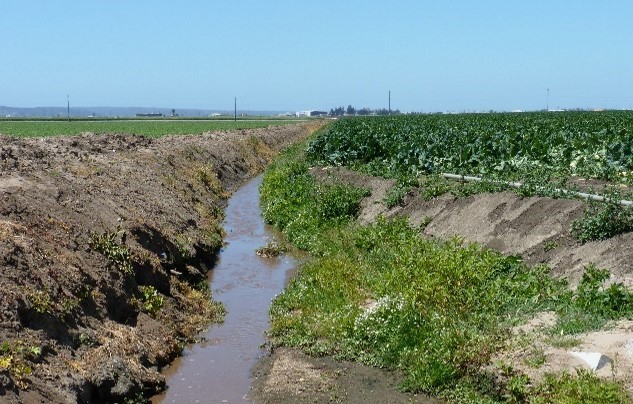
Is California serious about racial equity and the belief that every human being has the right to safe, clean, and affordable drinking water?
We don’t think so. That is why California Coastkeeper Alliance teamed up with rural Latino community and farmworker groups, environmental organizations, and commercial and recreational fishing organizations to file a lawsuit against the Water Boards’ September decision to strike down measures to control extensive nitrate pollution in the Central Coast region. Our coalition contends that nitrates in runoff from chemical fertilizers and other sources contaminate thousands of families’ wells, and that by refusing to take steps to protect the region’s polluted rivers and streams, the State has become part of the problem. The State Water Board’s decision has statewide policy and downstream impacts and represents the state government’s unwillingness to confront decades of pollution by the agricultural industry—despite rising nitrate contamination resulting in a lack of clean, safe, affordable drinking water for many communities.
In 2012, California passed the Human Right to Water law, AB 685, which statutorily affirms that “every human being has the right to safe, clean, affordable, and accessible water adequate for human consumption, cooking, and sanitary purposes.” Since then, the state has made numerous investments to provide environmental justice communities with bottled water – but have done little to nothing to protect those communities’ drinking water from agricultural pollution. In 2021, the State Water Board adopted its Racial Equity Resolution, which reaffirmed the human right to water and committed itself to making racial equity central to the Water Boards’ work so that outcomes were not determined by a person’s race and the benefits are shared equitably by all people. Unfortunately, those commitments have become merely aspirational – just words on paper.
Nitrate contamination in the Central Coast region is widespread and increasing. Recent data gathered by the Regional Board indicates that communities of color in the Central Coast tend to experience high nitrate levels in both ground and surface waters compared to communities that are predominantly white. Nitrate consumption is especially dangerous for infants and pregnant women as it can cause potentially deadly methemoglobinemia (“blue baby syndrome”). Nitrates can also cause cancer and thyroid disease in adults. The State Water Board’s Order frustrated the hopes of community and environmental groups that the Central Coast was on a path to cleaner water and a healthier environment. With this Order, the State Board has signaled its intention to remove similar nitrate limits from Regional Board orders in other agricultural communities.
The broad coalition challenged the State Board’s decision to overturn the Central Coast Agricultural Order (Ag 4.0) adopted by the Central Coast Regional Water Quality Control Board in 2021. Ag 4.0 was a groundbreaking effort to regulate nitrate contamination caused by over-application of chemical nitrate fertilizers: for the first time, it set hard numeric limits on fertilizer use. However, the State Board decision struck down the regional water board’s limits and required that the Regional Board approve a new order without enforceable limits. The State Board also upheld the Regional Board decision not to apply buffers that would protect streams, rivers, and wetlands from toxic pesticides while providing critical habitat to Central Coast fisheries, including threatened Steelhead. Without nitrate limits and stream buffers, Regional Board evidence suggested that discharges would violate water quality plans.
We are tired of the empty promises by our Water Boards to ensure all Californians have access to swimmable, drinkable, and fishable waters. The lack of enforceable groundwater limits and surface water protections only perpetuates the status quo, and the status quo is untenable for California’s disadvantaged communities.

Executive Director Sean Bothwell leads CCKA’s initiatives to fight for swimmable, fishable, and drinkable waters for all Californians.



